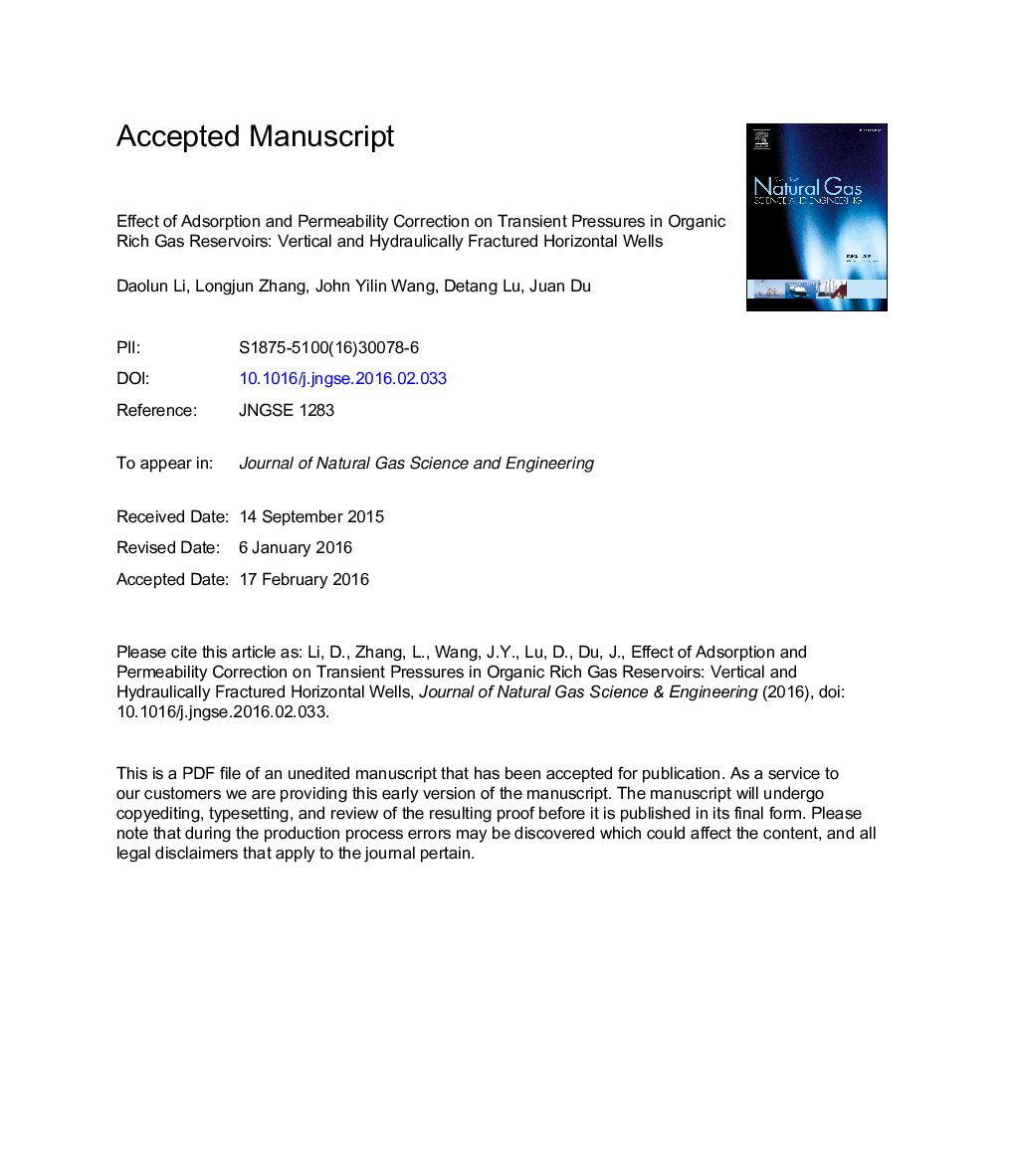| Article ID | Journal | Published Year | Pages | File Type |
|---|---|---|---|---|
| 8128893 | Journal of Natural Gas Science and Engineering | 2016 | 29 Pages |
Abstract
A numerical model based on PEBI (Perpendicular Bisection) gridding was developed to study transient pressure responses in organic rich gas reservoirs by incorporating slippage corrected gas permeability and adsorbed gas effect. Parametric studies were conducted to investigate effects of slippage corrected permeability, gas adsorption, number of fractures, types of wells, and flow rate. Numerical simulation shows that gas desorption induces a radial flow regime and then a linear flow regime during early times for vertical wells. For the multistage fractured horizontal wells, gas desorption slows down the decrease rate of bottom-hole pressure, which is marked by a seeming flat line segment on the pressure curves. Its length depends on gas adsorption capacity, and its position depends on permeability and contact area between hydraulic fractures and reservoir, which can be used to estimate reservoir parameters such as permeability, ultimate adsorption capacity and length of hydraulic fractures. Based on these findings, a pressure interpretation procedure is established. Our findings lead to better understanding and interpretation of transient pressures in shale gas reservoirs.
Keywords
Related Topics
Physical Sciences and Engineering
Earth and Planetary Sciences
Earth and Planetary Sciences (General)
Authors
Daolun Li, Longjun Zhang, John Yilin Wang, Detang Lu, Juan Du,
